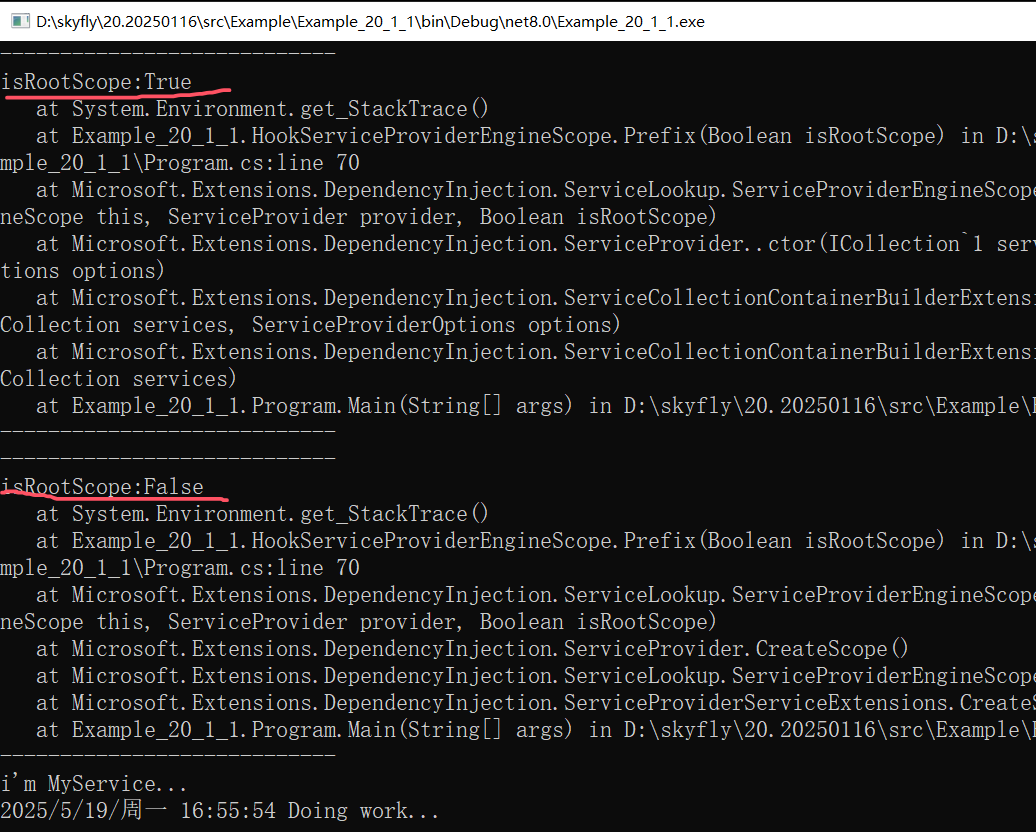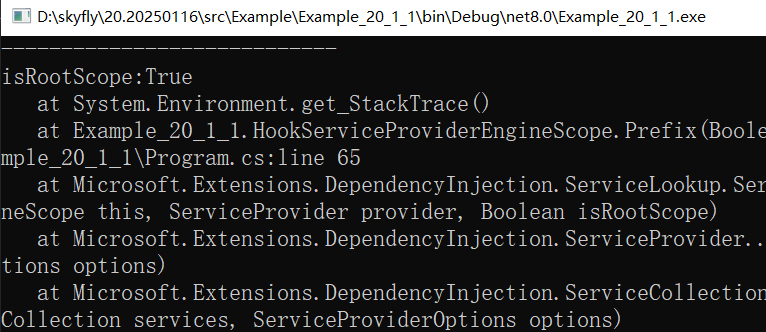一:背景
1. 讲故事
上一篇我们讲到了 注解特性,harmony 在内部提供了 20个 HarmonyPatch 重载方法尽可能的让大家满足业务开发,那时候我也说了,特性虽然简单粗暴,但只能解决 95% 的问题,言外之意还有一些事情做不到,所以剩下的 5% 只能靠 完全手工 的方式了。
二:注解特性的局限性
虽然有20个重载方法,但还不能达到100%覆盖,不要以为我说的这种情况比较罕见,是很正常的场景,比如说:
这里我就拿第二种来说把,参考代码如下:- internal sealed class ServiceProviderEngineScope : IServiceScope, IDisposable, IServiceProvider, IKeyedServiceProvider, IAsyncDisposable, IServiceScopeFactory
- {
- public ServiceProviderEngineScope(ServiceProvider provider, bool isRootScope)
- {
- ResolvedServices = new Dictionary<ServiceCacheKey, object>();
- RootProvider = provider;
- IsRootScope = isRootScope;
- }
- }
1. internal
代码是程序集可访问,所以你不能使用任何 typeof(xxx) 形式的构造函数,否则就会报错,参考如下:
2. 有参构造函数
由于不能使用 typeof(xxx),所以只能通过 字符串模式 反射type,当你有心查找你会发现第20个重载方法虽然支持 string 格式,但不提供 Type[] argumentTypes 参数信息,代码如下:- [AttributeUsage(AttributeTargets.Class | AttributeTargets.Method | AttributeTargets.Delegate, AllowMultiple = true)]
- public class HarmonyPatch : HarmonyAttribute
- {
- ...
- public HarmonyPatch(string typeName, string methodName, MethodType methodType = MethodType.Normal);
- ...
- }
熟悉这个类的朋友应该明白,这是上层调用 serviceProvider.CreateScope() 方法没有释放导致的,那接下来的问题是到底谁在不断的调用 CreateScope() 呢? 直接监控 ServiceProviderEngineScope 的构造函数就可以了。
三:解决方案
1. 使用 TargetMethod 口子函数
上一篇跟大家聊过 harmony 的口子函数 TargetMethods,它可以批量返回需要被 patch 的方法,如果你明确知道只需返回一个,可以用 TargetMethod 口子来实现,有了这些思路之后,完整的实现代码如下:- internal class Program
- {
- static void Main(string[] args)
- {
- var harmony = new Harmony("com.dotnetdebug.www");
- harmony.PatchAll();
- // 1. 创建服务集合
- var services = new ServiceCollection();
- // 2. 注册一个作用域服务
- services.AddScoped<MyService>();
- // 3. 构建服务提供者
- var serviceProvider = services.BuildServiceProvider();
- // 4. 创建作用域
- var scope = serviceProvider.CreateScope();
- var myService = scope.ServiceProvider.GetRequiredService<MyService>();
- myService.DoSomething();
- Console.ReadLine();
- }
- }
- class MyService : IDisposable
- {
- public MyService()
- {
- Console.WriteLine("i'm MyService...");
- }
- public void DoSomething()
- {
- Console.WriteLine($"{DateTime.Now} Doing work...");
- }
- public void Dispose()
- {
- Console.WriteLine($"{DateTime.Now} Disposing MyService");
- }
- }
- [HarmonyPatch]
- public class HookServiceProviderEngineScope
- {
- [HarmonyTargetMethod]
- static MethodBase TargetMethod()
- {
- var engineScopeType = Type.GetType("Microsoft.Extensions.DependencyInjection.ServiceLookup.ServiceProviderEngineScope, Microsoft.Extensions.DependencyInjection");
- var constructor = engineScopeType.GetConstructors(BindingFlags.Instance | BindingFlags.Public | BindingFlags.NonPublic)[0];
- return constructor;
- }
- public static void Prefix(bool isRootScope)
- {
- Console.WriteLine("----------------------------");
- Console.WriteLine($"isRootScope:{isRootScope}");
- Console.WriteLine(Environment.StackTrace);
- Console.WriteLine("----------------------------");
- }
- }

有些朋友可能要说了,这地方为什么会有两个调用栈,熟悉底层的朋友应该知道分别由 services.BuildServiceProvider 和 serviceProvider.CreateScope 贡献的。
写到这里的时候,出门抽了个烟,突然灵光一现,既然20个单重载方法不够用,我完全可以使用 HarmonyPatch 注解特性组合呀。。。相当于平级补充,说干就干,参考代码如下:- [HarmonyPatch("Microsoft.Extensions.DependencyInjection.ServiceLookup.ServiceProviderEngineScope, Microsoft.Extensions.DependencyInjection", null, MethodType.Constructor)]
- [HarmonyPatch(new Type[2] { typeof(ServiceProvider), typeof(bool) })]
- public class HookServiceProviderEngineScope
- {
- public static void Prefix(bool isRootScope)
- {
- Console.WriteLine("----------------------------");
- Console.WriteLine($"isRootScope:{isRootScope}");
- Console.WriteLine(Environment.StackTrace);
- Console.WriteLine("----------------------------");
- }
- }
2. 完全动态hook
整体上来说前面的 TargetMethod 模式属于混合编程(特性+手工),如果让代码更纯粹一点话,就要把所有的 Attribute 摘掉,这就需要包装器类 HarmonyMethod ,修改后的代码如下:- internal class Program
- {
- static void Main(string[] args)
- {
- var harmony = new Harmony("com.dotnetdebug.www");
- var engineScopeType = Type.GetType("Microsoft.Extensions.DependencyInjection.ServiceLookup.ServiceProviderEngineScope, Microsoft.Extensions.DependencyInjection");
- var originalMethod = engineScopeType.GetConstructors(BindingFlags.Instance | BindingFlags.Public | BindingFlags.NonPublic)[0];
- var prefixMethod = typeof(HookServiceProviderEngineScope).GetMethod("Prefix");
- harmony.Patch(originalMethod, new HarmonyMethod(prefixMethod));
- // 1. 创建服务集合
- var services = new ServiceCollection();
- // 2. 注册一个作用域服务
- services.AddScoped<MyService>();
- // 3. 构建服务提供者
- var serviceProvider = services.BuildServiceProvider();
- // 4. 创建作用域
- var scope = serviceProvider.CreateScope();
- var myService = scope.ServiceProvider.GetRequiredService<MyService>();
- myService.DoSomething();
- Console.ReadLine();
- }
- }
- class MyService : IDisposable
- {
- public MyService()
- {
- Console.WriteLine("i'm MyService...");
- }
- public void DoSomething()
- {
- Console.WriteLine($"{DateTime.Now} Doing work...");
- }
- public void Dispose()
- {
- Console.WriteLine($"{DateTime.Now} Disposing MyService");
- }
- }
- public class HookServiceProviderEngineScope
- {
- public static void Prefix(bool isRootScope)
- {
- Console.WriteLine("----------------------------");
- Console.WriteLine($"isRootScope:{isRootScope}");
- Console.WriteLine(Environment.StackTrace);
- Console.WriteLine("----------------------------");
- }
- }

这里稍微提一下 HarmonyMethod 类,它的内部有很多的参数可以配置,比如 优先级,日志 功能,这些都是 Attribute 所做不了的,参考如下:- public class HarmonyMethod
- {
- public MethodInfo method;
- public string category;
- public Type declaringType;
- public string methodName;
- public MethodType? methodType;
- public Type[] argumentTypes;
- public int priority = -1;
- public string[] before;
- public string[] after;
- public HarmonyReversePatchType? reversePatchType;
- public bool? debug;
- public bool nonVirtualDelegate;
- }
在 特性 搞不定的时候,手工HarmonyMethod编程是一个很好的补充,这几篇我们只关注了 Prefix,毕竟从高级调试的角度看,我们更关注问题代码的 调用栈 ,从而寻找引发故障的元凶。
来源:新程序网络收集,如果侵权,请联系站长删除
免责声明:如果侵犯了您的权益,请联系站长,我们会及时删除侵权内容,谢谢合作! |